What’s in the Way?: Clearing Barriers to Seafood Traceability
The energy was high in Bangkok this February as hundreds of people came to participate in both the Seafood Alliance for Legality and Traceability (SALT) PartnerLab and the Seafood and Fisheries Emerging Technologies Conference. The SALT PartnerLab was a workshop where over 60 sustainable seafood experts came together to tackle some of the toughest issues that affect our oceans, specifically around seafood traceability and illegal, unreported, and unregulated (IUU) fishing. Immediately following that workshop, the Seafood and Fisheries Emerging Technologies Conference convened hundreds of technology providers, NGOs, and government officials to explore innovative technologies for supply chain traceability and ocean monitoring, control, and surveillance.
 Experts from across the globe convene at the SALT PartnerLab
Experts from across the globe convene at the SALT PartnerLab
There was a consistent theme that kept emerging at both events – barriers to uptake of electronic catch documentation and traceability (eCDT). It was clear at the Seafood and Fisheries Emerging Technologies Conference that there are many eCDT technology options on the market, but there are also many challenges around the uptake, sustained use, and scalability of these technologies. Given the barriers that were identified, challenges to adoption of eCDT systems can be largest for actors at the beginning and middle of the supply chain as well as producer country governments. While there are barriers to eCDT uptake, the good news is that solutions exist.
These were the common themes addressed around eCDT barriers and proven practices that have helped overcome these barriers:
Barrier:
- Value received from traceability is lower at the beginning and middle of the supply chain.
Proven solutions:
- Highlight non-monetary incentives to users of eCDT technologies. These can include increased safety at sea, connectivity to family on land, improved market access, operational efficiencies, and digitized records of income.
- Increase transparency in eCDT technologies that empower actors at the beginning and middle of the supply chain to see what their product is selling for and have more control over the price of their product.
- Provide fishers that use eCDT technologies with a minimum payment for their product each month to help ensure a consistent stream of income.
Barrier:
- Insufficient training for users of eCDT technologies.
Proven solutions:
- NGOs have served a valuable role in providing support to users of new eCDT technologies in traceability pilots. Longevity of support is critical to the success of these new efforts.
- Some users have not had much exposure to technology and require tools that are intuitive to use. Developing technology that can be easily used and understood is critical for uptake and long-term adoption.
Barrier:
- Technology isn’t compatible for use in some producer countries.
Proven solutions:
- Technology products should be developed to consider the infrastructure limitations in the area of use (e.g. Is electricity widely available? What voltage is required to power the technology?). It’s optimal to create technology that is custom designed to the unique needs of each fishery and area of operation, or to design adaptable technology that can operate in a variety of environments.
- If literacy is low among users, eCDT technology should be developed with a heavy emphasis on images and simple graphs instead of text.
Barrier:
- Lack of trust between technology implementers and users.
Proven solutions:
- A bottom-up, participatory process between technology developers and users helps drive uptake.
- It’s integral that implementers (NGOs or technology providers) build relationships with the eCDT technology users at a very early stage, and co-design solutions together.
- Incentives should be highlighted for the users early and often.
 Traceability technology being used at an Oceans and Fisheries Partnership site (photo credit: USAID Oceans)
Traceability technology being used at an Oceans and Fisheries Partnership site (photo credit: USAID Oceans)
SALT has been hearing many of these concerns from seafood stakeholders since its inception, and these concerns support the existence and need for this alliance. Many traceability projects are still disconnected, limiting the ability for those working on solutions to learn from one another. SALT is here to make those connections and share these stories. Through our online platform, we will have a map where users can learn about the numerous traceability efforts operating around the globe and easily connect to those involved. SALT will be sharing case studies and reports that have valuable information to help improve and scale working traceability solutions. SALT will also be on the water conducting interviews with those that are working directly with eCDT systems and sharing the stories of fishers and other important actors whose voices aren’t typically heard. Lastly, SALT will be capturing and sharing relevant information from meetings on fisheries and eCDT (like this blog!) to help increase knowledge exchange amongst the community.
We want to hear from you! Do you have a story to tell, a case study to share, or an important resource on overcoming barriers to eCDT uptake? Please email SALT@fishwise.org to share this information with us and the SALT community.
